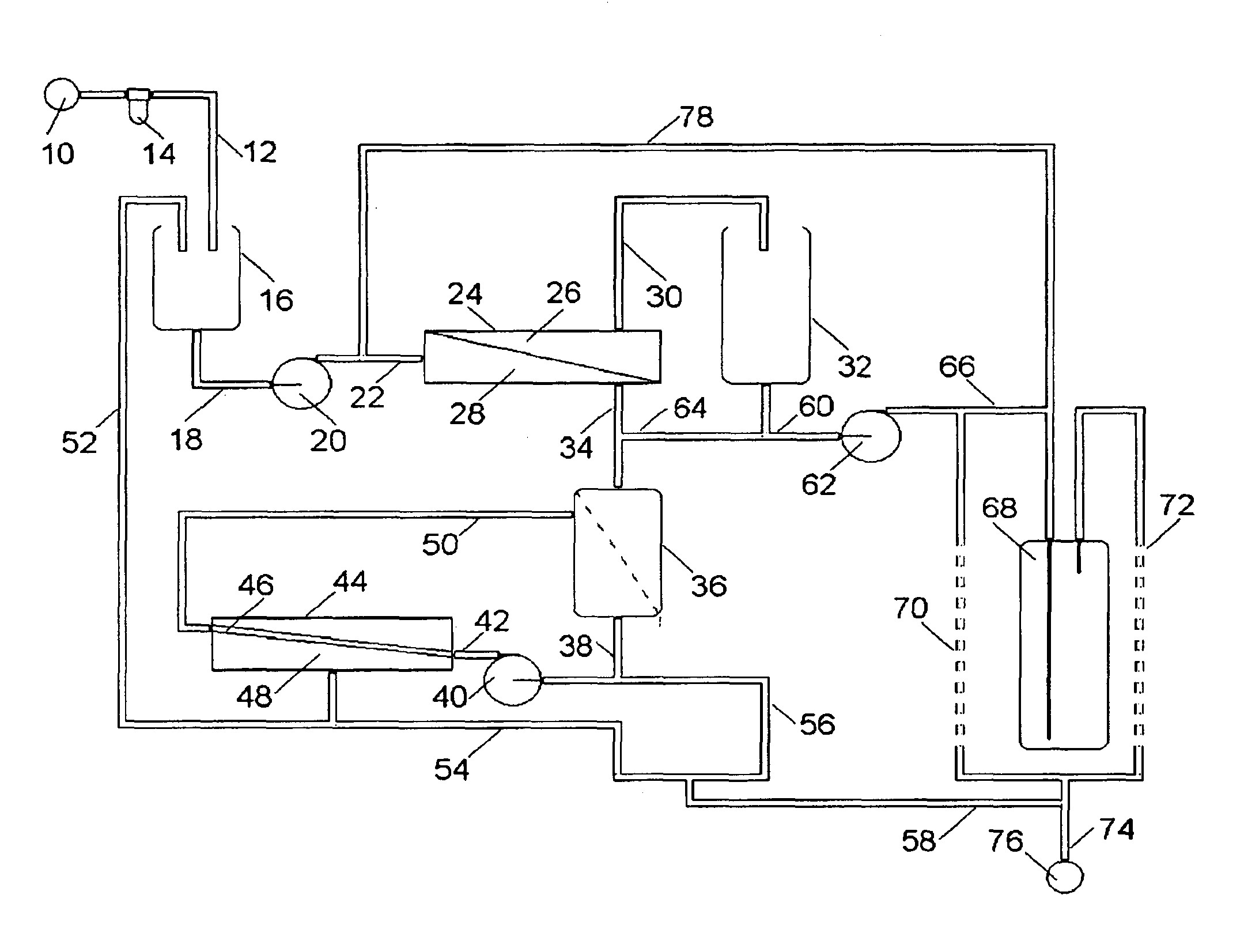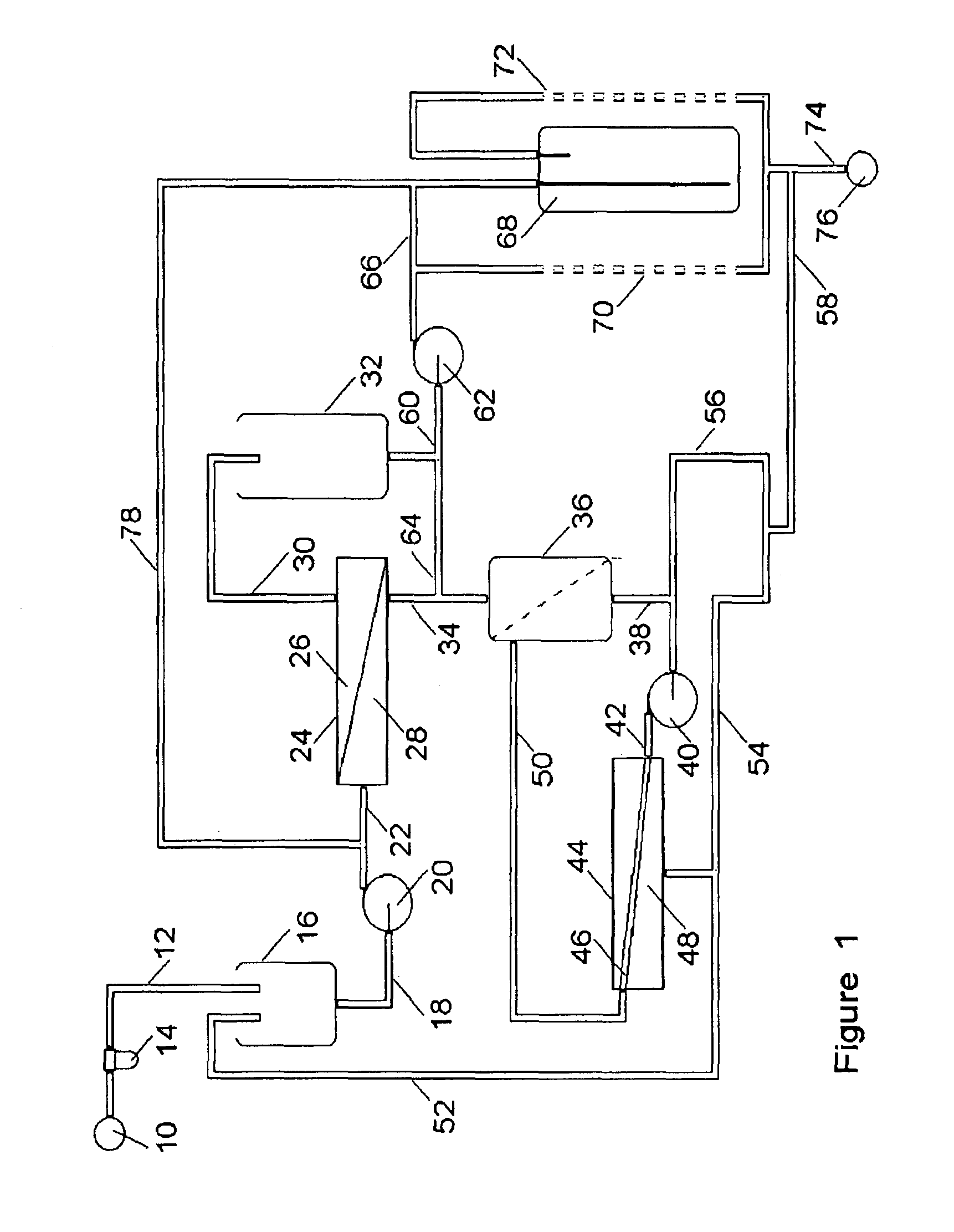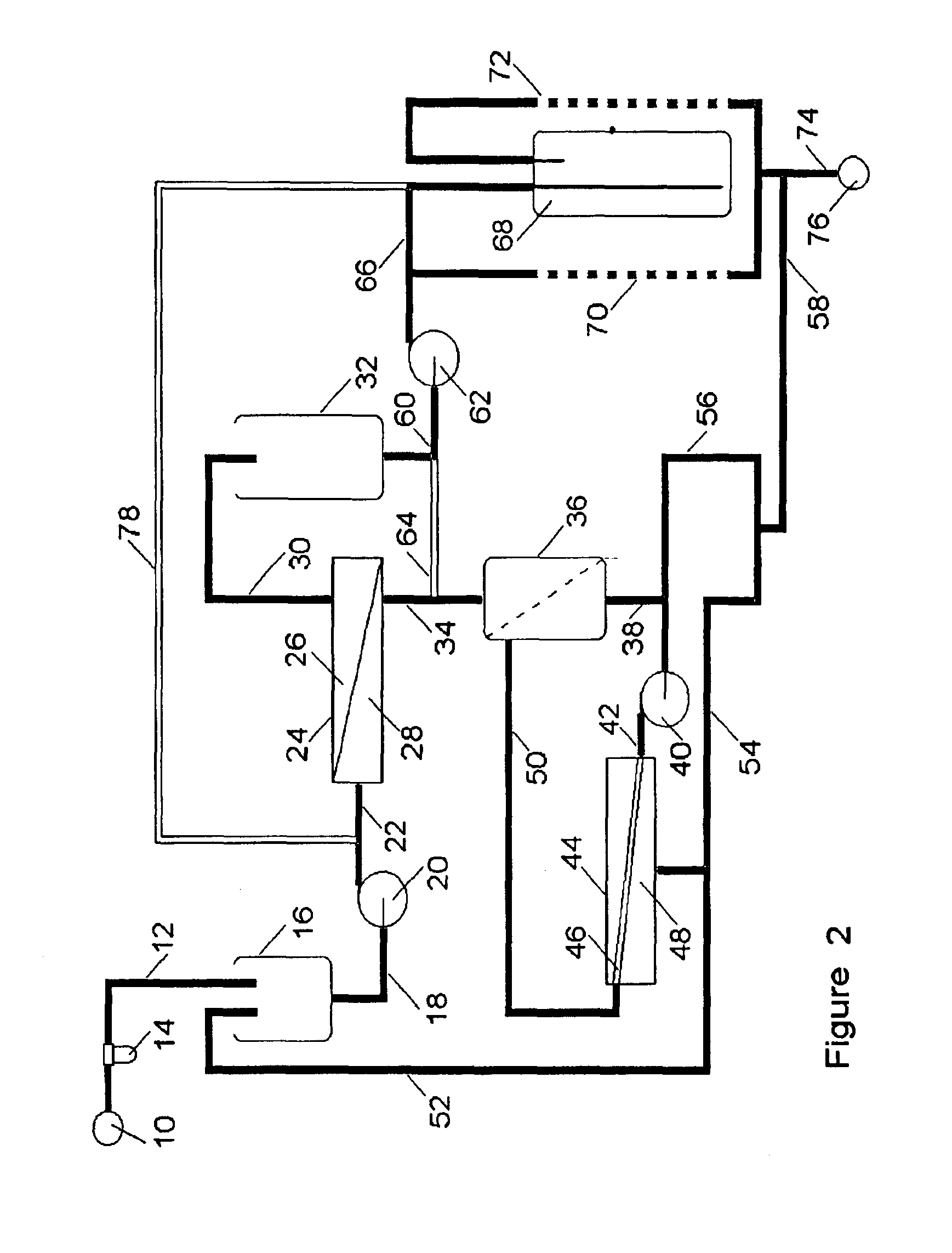Method and apparatus for parallel desalting
a technology of desalting and water treatment method, applied in the direction of filtration separation, multi-stage water/sewage treatment, separation process, etc., can solve the problems of reducing the service life of water utilities, limiting the use of high operating pressure, and affecting the long-term performance of water systems, so as to improve the recovery level without jeopardizing the long-term performance of the system, and achieve 100 percent reusable effluent, the effect of improving the recovery level
- Summary
- Abstract
- Description
- Claims
- Application Information
AI Technical Summary
Problems solved by technology
Method used
Image
Examples
example 1
[0180]Solution pH is an important process variable, and is a major consideration for the integration and optimization of the performance of the PDS system. Example 1 illustrates the use of membrane separation to establish the target pH levels in a RO concentrate stream that are conducive to the metastable precipitation of calcium carbonate on to seed crystals. The mixing of supersaturated concentrate with a suspension of seed particles in a precipitated concentrate solution is an essential means for recycling a reduced pH concentrate back to a RO membrane unit. A tubular MF (wastewater) membrane is situated downstream of a potable-water RO membrane to strictly deal with the processing of TDS and water hardness (salinity). The water introduced to the PDS apparatus is of potable water quality, and it is further pretreated to remove suspended micron-sized particles and oxidizing constituents prior to RO membrane treatment. The wastewater membrane is needed because the RO concentrate is...
example 2
[0189]The influence of the precipitation reaction dynamics on the attainment of desired pH levels for the seeded concentrate solution, and the stabilization of the pH during the PDS soft water supply operation, are examined in Example 2. This example illustrates the exponential rate of decline of the PCC reaction (seed precipitation of calcium carbonate) with reduced pH and alkalinity. As the precipitation reaction proceeds, and as the pH of the precipitated concentrate solution falls, an increasing amount of conditioning time is required to reduce the retained concentrate to a lower target pH level. In Example 2, the PDS90 operation is based on a pH 8.1 supply of hard alkaline water, and a 84 percent recycling of precipitated concentrate. The concentrate is conditioned for longer periods of time to achieve increasingly lower levels of calcium hardness and increasingly lower re-initialed pH levels for the stored concentrate. The duration required for the extended conditioning of the...
example 3
[0192]The adaptability of the PDS method and apparatus in producing de-mineralized soft water from hard, alkaline water was further investigated using source water supplied from local (Southern California) groundwater supplies. Table EX3 provides water quality representative of Southern California water, their constituent ion concentrations, and the ion concentrations expected for PDS product water. Commonly dissolved minerals impart a definite taste to groundwaters and surface waters used for community supply. The PDS system has the capability to transform highly mineralized drinking water into water of the highest aesthetic and perceptual quality. This premium quality for drinking water is found naturally in mountain headwater streams and lakes (Lake Tahoe, Arrowhead Lake, and the uppermost reaches of the Colorado River.)
[0193]Detailed surveys of perceptual quality of drinking water supplied to the main urban centers in California have shown that when this premium grade of water i...
PUM
| Property | Measurement | Unit |
|---|---|---|
| pressure | aaaaa | aaaaa |
| pressure | aaaaa | aaaaa |
| pH | aaaaa | aaaaa |
Abstract
Description
Claims
Application Information
 Login to View More
Login to View More - R&D
- Intellectual Property
- Life Sciences
- Materials
- Tech Scout
- Unparalleled Data Quality
- Higher Quality Content
- 60% Fewer Hallucinations
Browse by: Latest US Patents, China's latest patents, Technical Efficacy Thesaurus, Application Domain, Technology Topic, Popular Technical Reports.
© 2025 PatSnap. All rights reserved.Legal|Privacy policy|Modern Slavery Act Transparency Statement|Sitemap|About US| Contact US: help@patsnap.com



